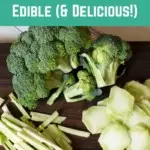
I’ll never forget the first time someone offered me sliced broccoli stems. I looked at my host funny as she continued chopping the stem and setting the florets to the side for our dinner.
She was happily munching away on the peeled and cut raw broccoli stem.
Meanwhile, I just stared at it thinking, “Um, no, we don’t eat this part.”
My host saw my face, laughed at me, and said, “Just try it.”
So, I did. Reluctantly.
Look, I don’t know who in their right mind decided that we should eat the broccoli crowns because let me tell you, we’ve been eating the wrong part for centuries.
The broccoli stem is crunchy, fresh, and mild in flavor. Plus, it doesn’t leave weird little green flowers in your teeth!
This was a mind-blowing discovery for me.
Have you ever wondered how many other parts of vegetables we toss in the trash, that are perfectly edible?
The answer? Plenty. Too many.
Sure, it’s all well and good to add these ‘leftover’ parts to your compost, but why throw away perfectly good food? Especially if you grow it yourself – growing your own food is a lot of work. You deserve to get as much out of that work as you can.
The amount of food waste that we create is unreal. Especially here in the states. You might want to sit down before you read this.
The FDA estimates that nearly 30-40% of our food supply goes to waste.
30-40%!
That’s roughly 131 billion pounds of food. Food that ends up sitting in landfills. I think we can do better.
We can make a small start by eating all of our veggies.
Let’s take a look at all of the secondary parts of fruits and vegetables that deserve a spot on your dinner plate.
1. Broccoli Stems, Leaves and Flower Stems
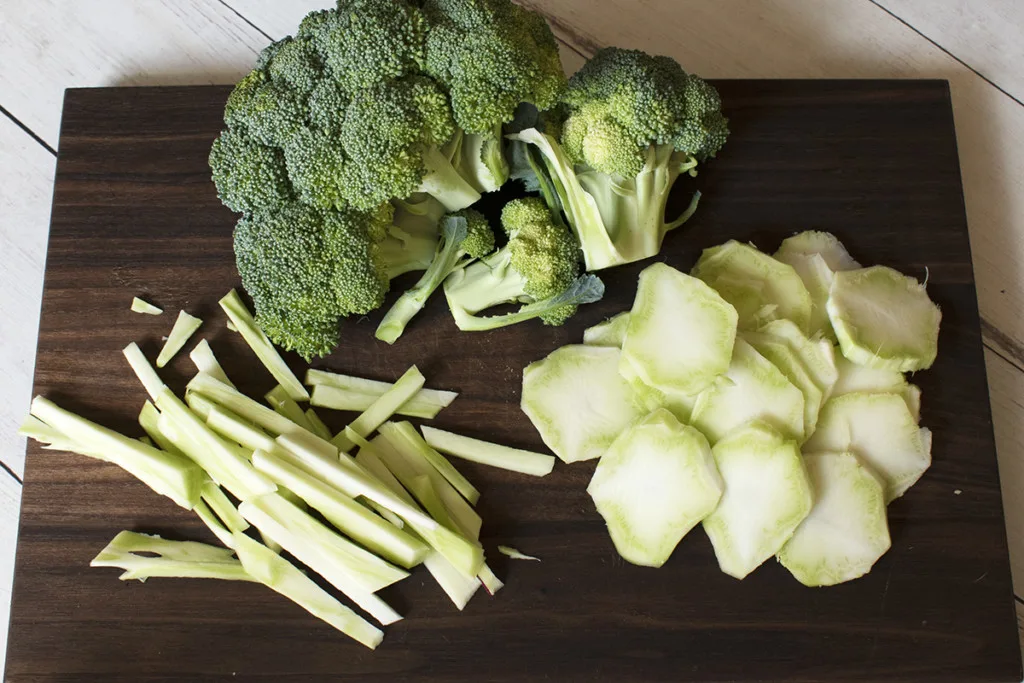
Peel the tough outer layer of broccoli stems and slice it long and thin for a fantastic addition to coleslaw or stir fry. Or eat it tossed in with a salad. Slice it into chips and serve them with hummus or veggie dip. Whatever you do, don’t throw out the most delicious part of the plant.
I’d bet even broccoli-haters would become broccoli-lovers if you gave them the stem to eat.
The flowers, flower stems, and the large leaves that surround the head of broccoli are edible, too; these also make a great addition to stir fry.
2. Cauliflower Leaves and Stem
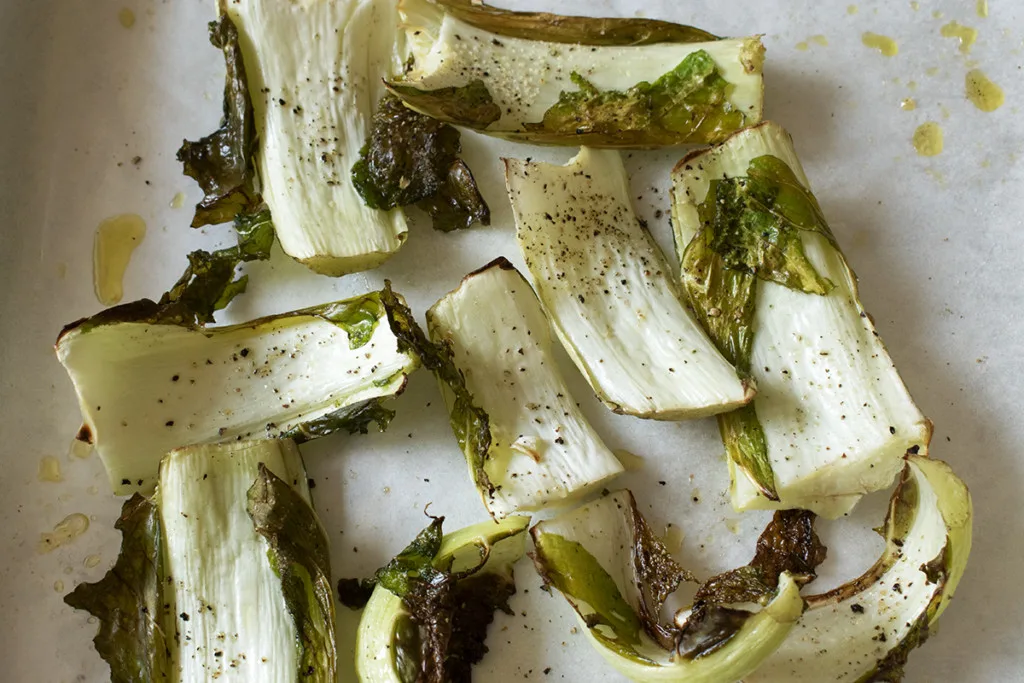
Cauliflower also has large leaves that grow surrounding the head, much like broccoli. And these leaves are absolutely wonderful roasted with a little olive oil and salt and pepper.
The best part is, if you don’t grow them yourself, you can often get them for free from farmer’s markets. Just ask anyone selling cauliflower to save the leaves for you.
I grew up watching my mother cut out the ‘heart’ of the cauliflower and throw it away to get to the florets. No, no, no! The inner stem is perfectly munchable too. Eat it all.
Read Next: Roasted Cauliflower Leaves – Oh Yes & Oh So Tasty!
3. Radish Tops and Seed Pods
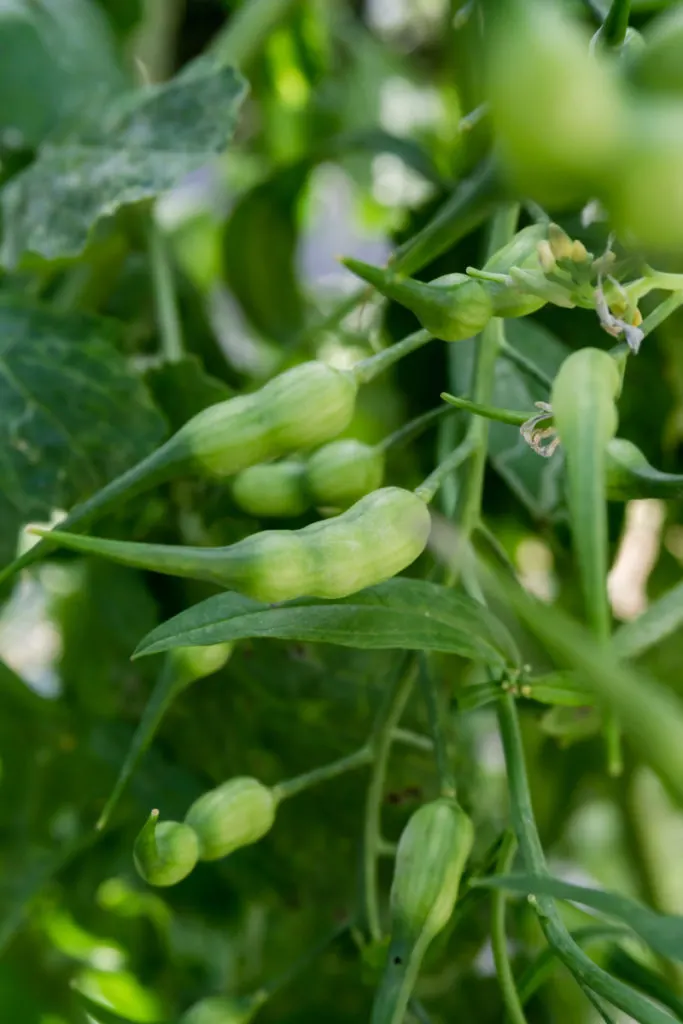
Yeah, I know what you’re thinking, “Tracey, have you seen radish leaves? They’re prickly.”
Yes, they are a little fuzzy. But they make a nutrient-dense addition to salads, and if the fuzzy part bothers you, chop them up and toss them in a stir fry or sauté them in a little butter as a tasty side.
Trust me; you don’t want to throw these on the compost pile.
Radish seed pods are the pods that develop when radish goes to seed. And they’re quite tasty.
Oddly enough, this part that we often consider as waste is popping up more and more in trendy restaurants.
You can even grow rat tail radish, which gives you plenty of these zesty little seed pods to munch instead of the usual roots.
4. Carrot Tops
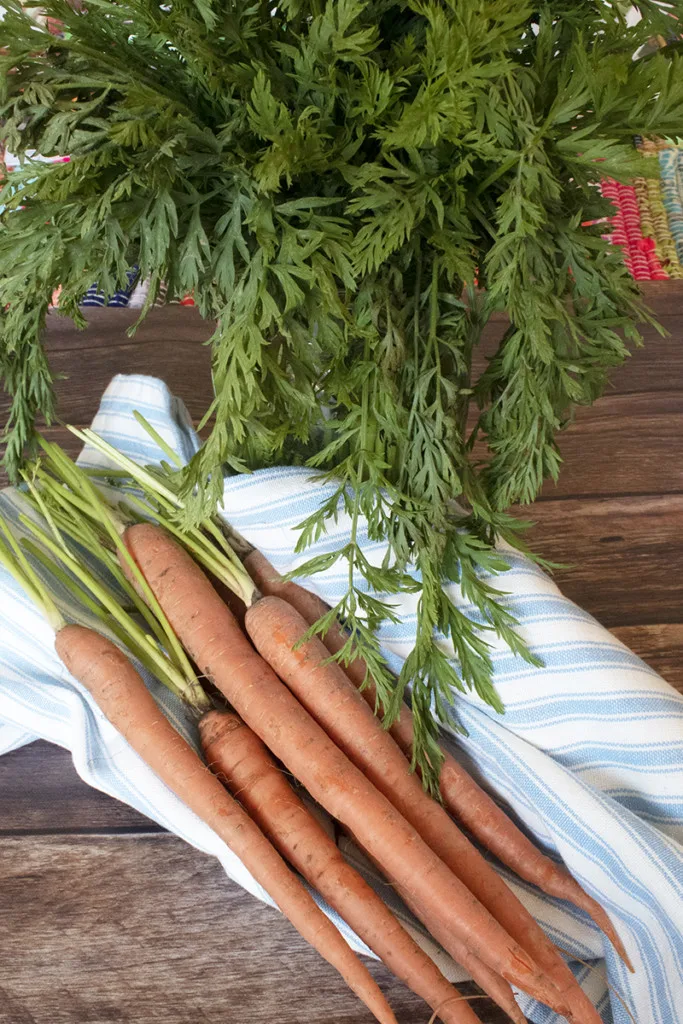
Yes, those lovely leafy tops are edible too.
Carrot tops tase a bit like swiss chard and parsley. They have a pleasant earthiness to them. You can tear them and toss them in a salad, add them to salsa or chutneys, or blend them into a pesto, hummus, or your morning smoothie.
But whatever you do, don’t throw out these leafy greens.
Read Next: 7 Crazy Good Ways To Eat Carrot Tops
5. Watermelon Rind and Seeds
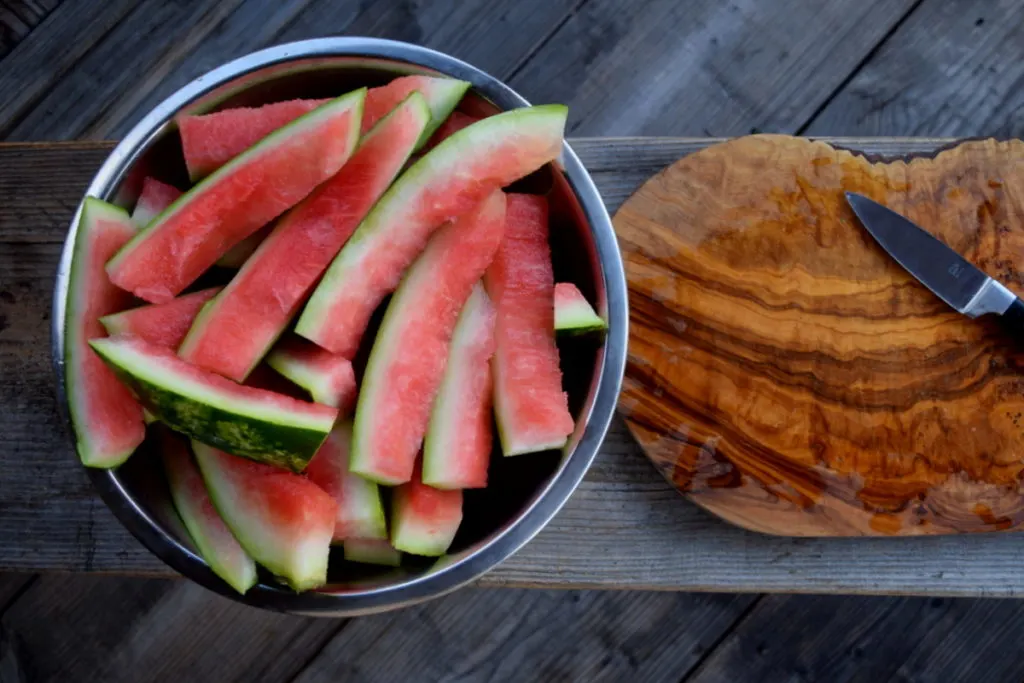
If you’ve never had watermelon rind pickles before, stop what you’re doing and go make a batch. Our own incredible Cheryl Magyar shows you how.
You seriously don’t know what you’re missing.
I was lucky enough to grow up eating pickled watermelon rind, and it’s almost as good as eating the watermelon itself. The rind changes in texture when you pickle it, and the finished product becomes nearly candy-like with its sweet-tart taste.
Watermelon seeds are edible as well, try munching on a few instead of spitting them at your little brother.
6. Sweet Potato Leaves and Vines
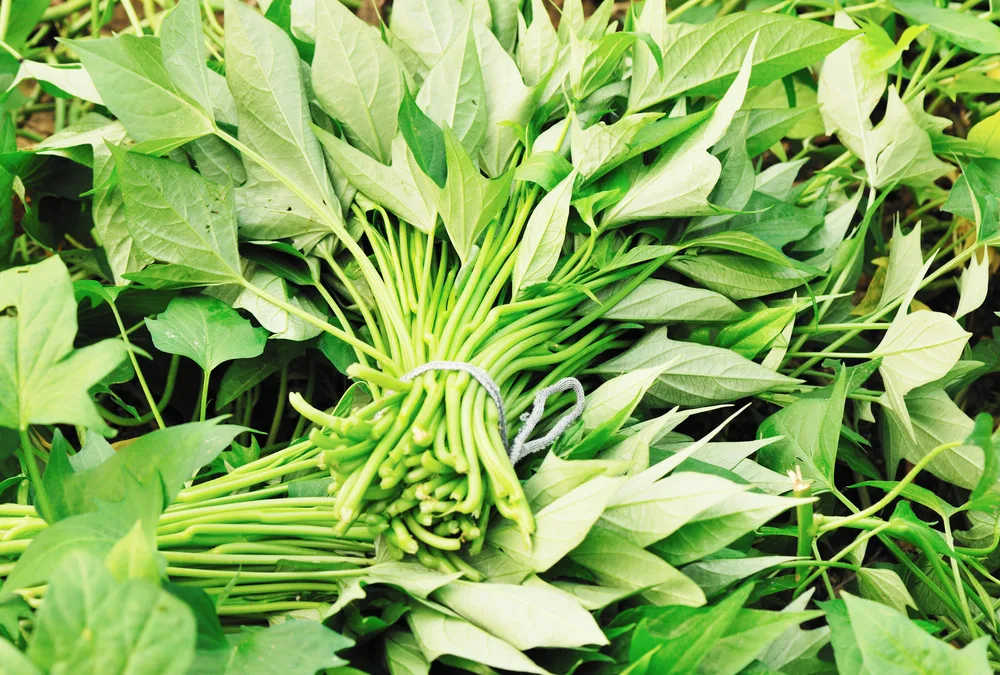
Many of us here in the west might think only of eating the sweet potato itself. However, many places around the world use the nutritious sweet potato leaves and vines in their every day cooking.
Try this delicious vegetable stir-fried with garlic and a bit of chili paste or sautéed with coconut milk.
7. Beet Tops
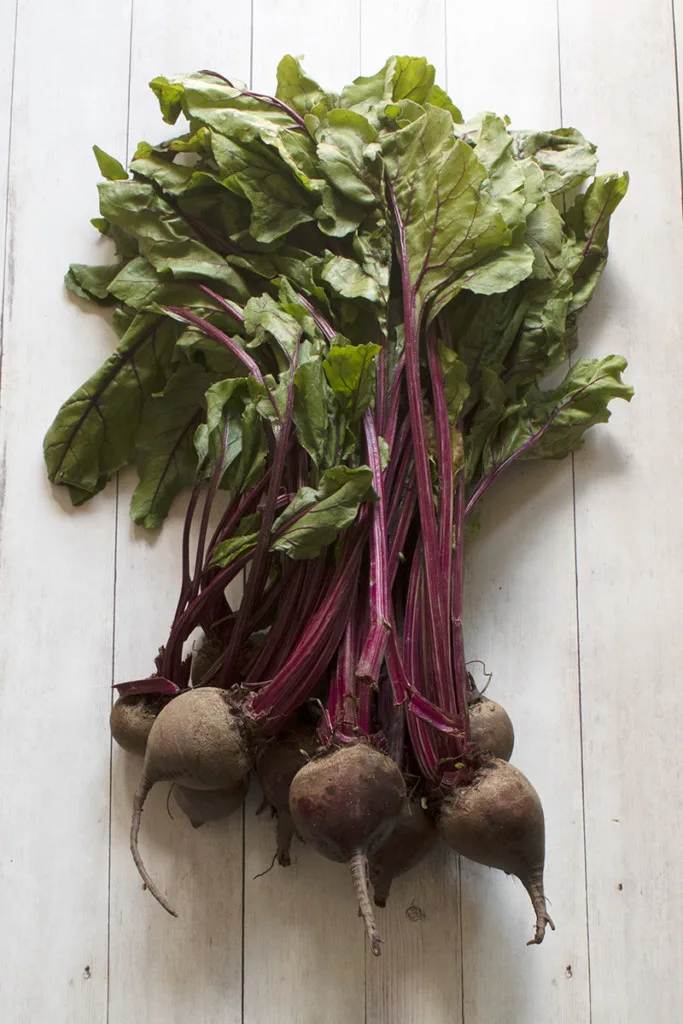
Beets are another fantastic green that very rarely makes it to the table. And it’s a shame as they taste as good as swiss chard or kale and their color is beautiful. Plus, you don’t have to dedicate extra garden space to this tasty dark leafy green if you’re already growing beets.
If you’re purchasing beets at a farmer’s market, ask if the vendor will save you a bag of beet tops. Most will happily do so.
8. Basil Buds
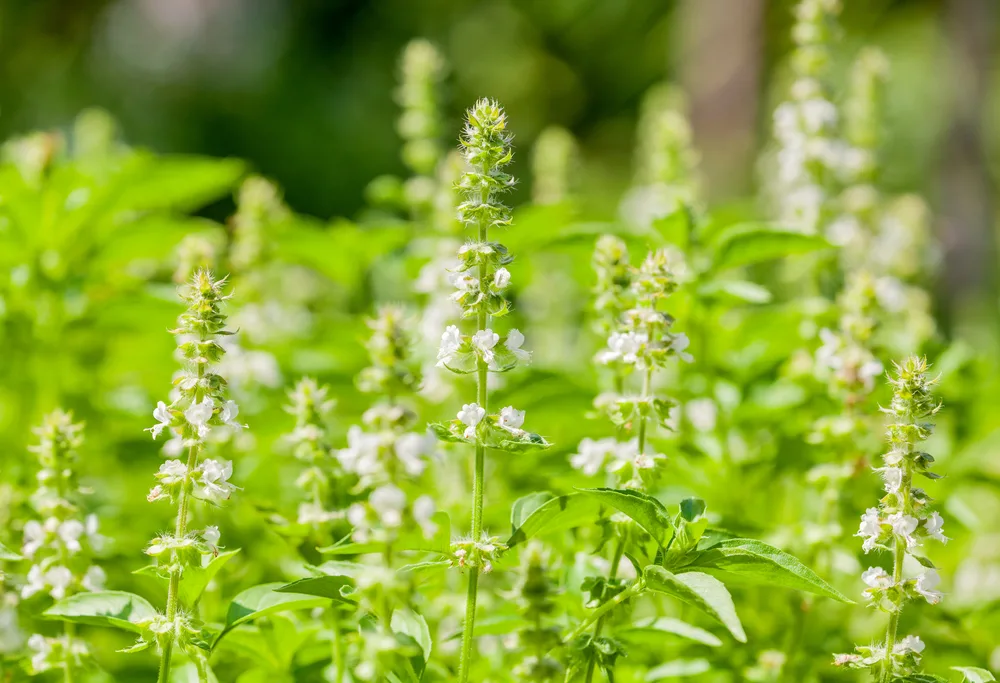
To get the best flavor from your basil plants, you should always try to pick the leaves continuously, so it doesn’t have a chance to produce buds.
(Check out how to grow super bushy basil right here.)
However, if your basil does provide a few flowers, pinch them off and cook with them or toss them in a salad. Although they will be milder, the flower buds still have that lovely basil flavor.
9. Squash Blossoms, Seeds, Young Leaves
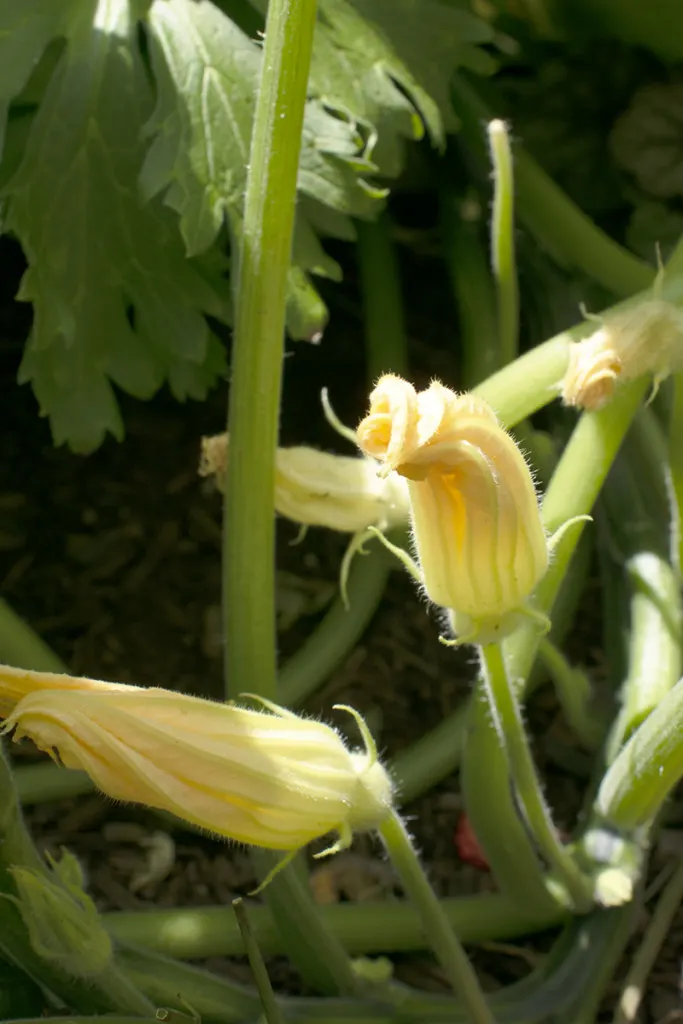
I’m sure most of you have heard of eating squash blossoms, and if you haven’t had the chance to eat them yet, I highly recommend it. They are quite delicious. Plus, eating excess squash blossoms is an easy way to keep your zucchini numbers in check.
Along with the blossoms, though, the very young leaves of squash are edible as well. You can even eat the small new leaves of cucumbers too. And if you’ve ever eaten toasted pumpkin seeds, then you already know how good those are. Toast squash seeds and nibble those also.
10. Parsley Roots
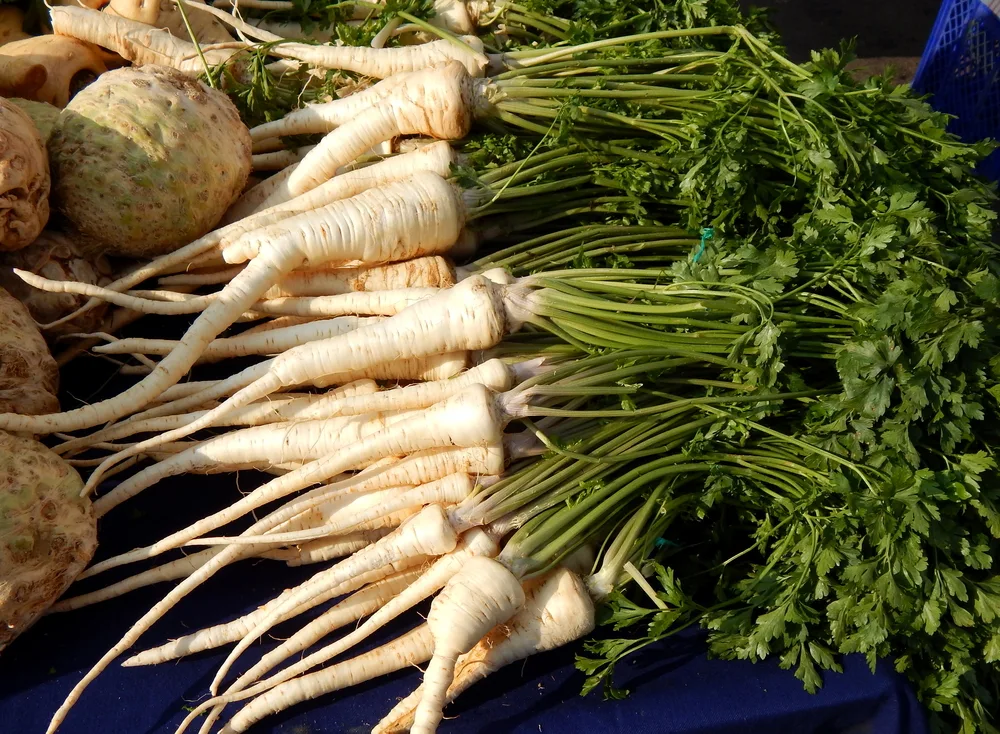
Yes, parsley roots. At the end of the growing season, why not pull your parsley up and toss those tasty little roots into a soup or a stew?
It tastes a bit like all of your favorite root veggies – carrots and turnips – with a hint of celery.
Add them into dishes where you want to add a more earthy flavor and give the recipe a bit more body.
11. Pea Shoots
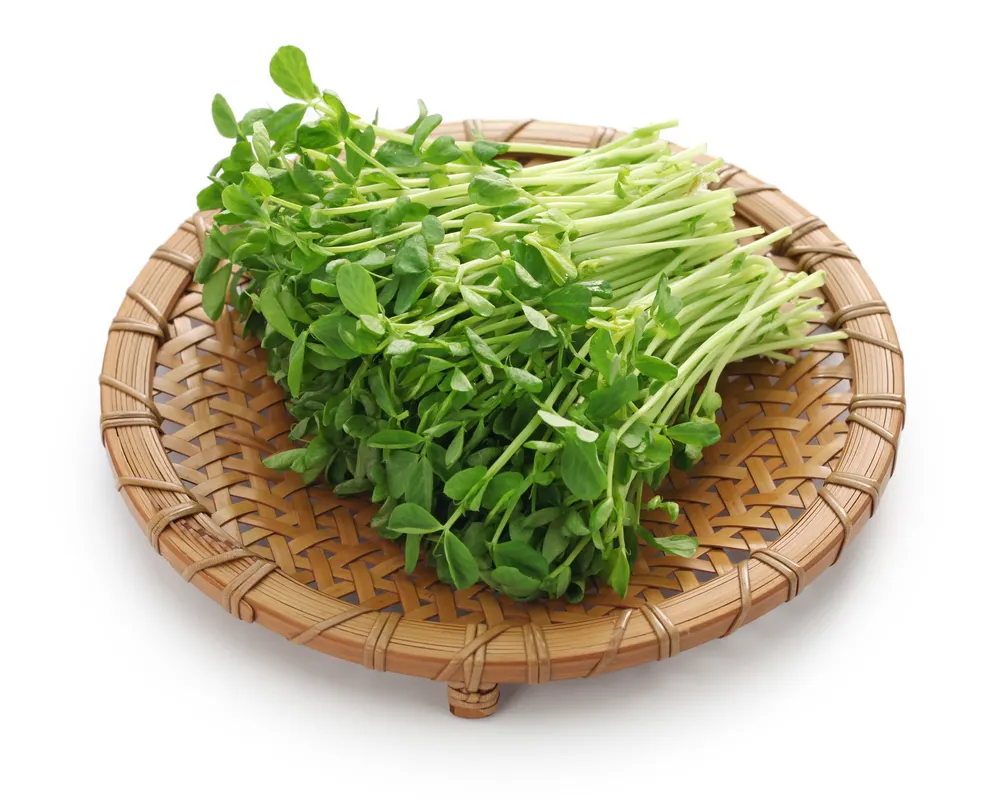
Pea shoots are another munchable veggie on our list that’s finding its way into trendy restaurants.
Not to be confused with pea sprouts, pea shoots are the longer, more developed stem of pea plants. Harvest them when they’re tender and small, about 4-6” long. But don’t take too many, or you won’t have many pea pods later in the spring.
If you enjoy this fresh taste of spring, you might consider growing pea shoots on your windowsill. It’s very easy to do, and you can enjoy them year-round. Traditionally, snow or sugar snap peas are used for growing pea shoots, but any pea variety will do just fine.
12. Celery Tops
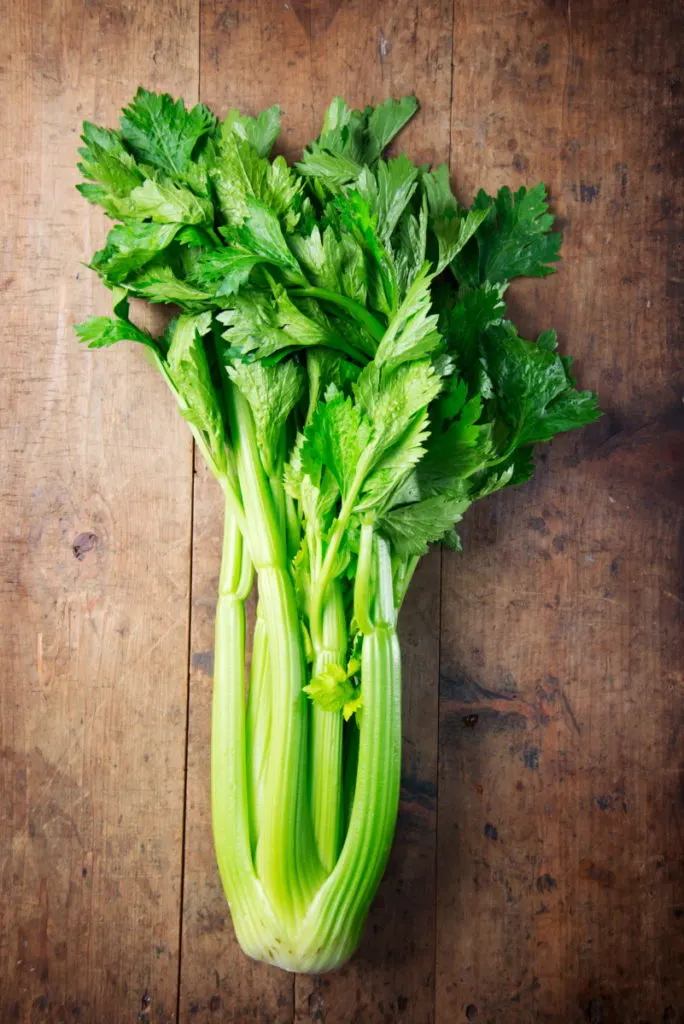
In every grocery store, you’ll find bags of ‘celery hearts’ with the tops and outer stalks removed. I’ve always found this so strange. The light and fresh taste of celery leaves are a welcome addition to many dishes.
I often use celery tops chopped up in egg or tuna salad. Save celery tops in a plastic bag in your freezer and use them when making stock or add them to soup.
And if you save the bottom you can regrow it.
13. Green and Lima Bean Leaves
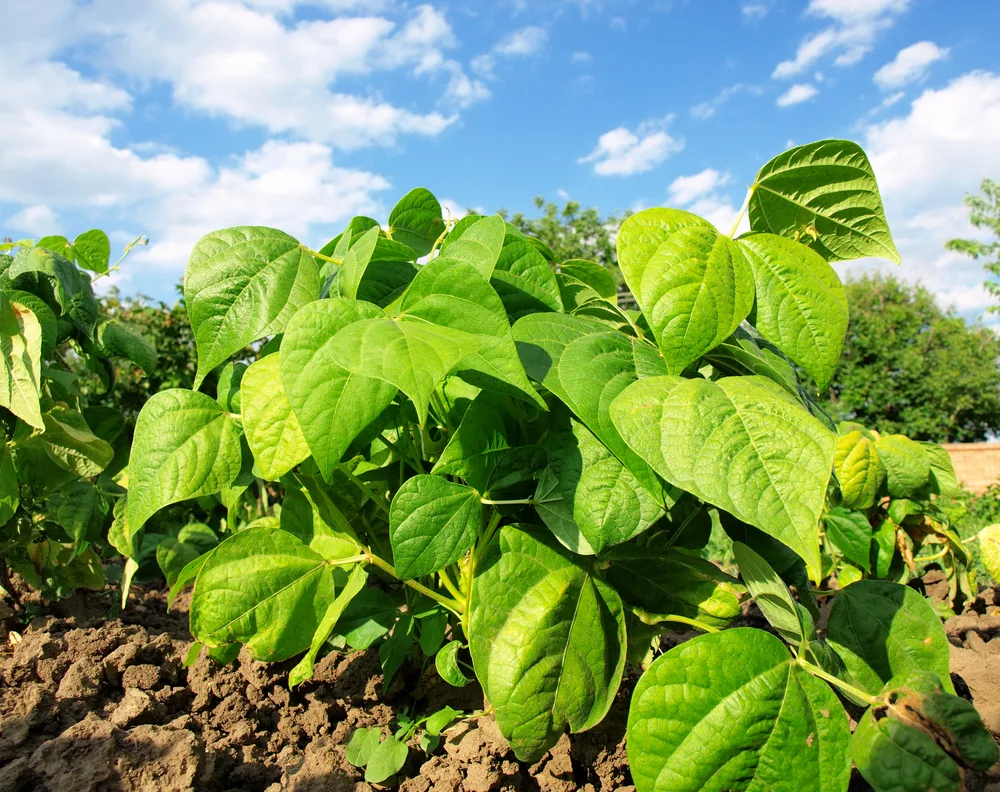
With all of the leaf options on this list, I think it’s safe to say you’ll probably never want for salad greens again. And like many other edible leaves, these are best sautéed or stir-fried.
14. Grape Leaves
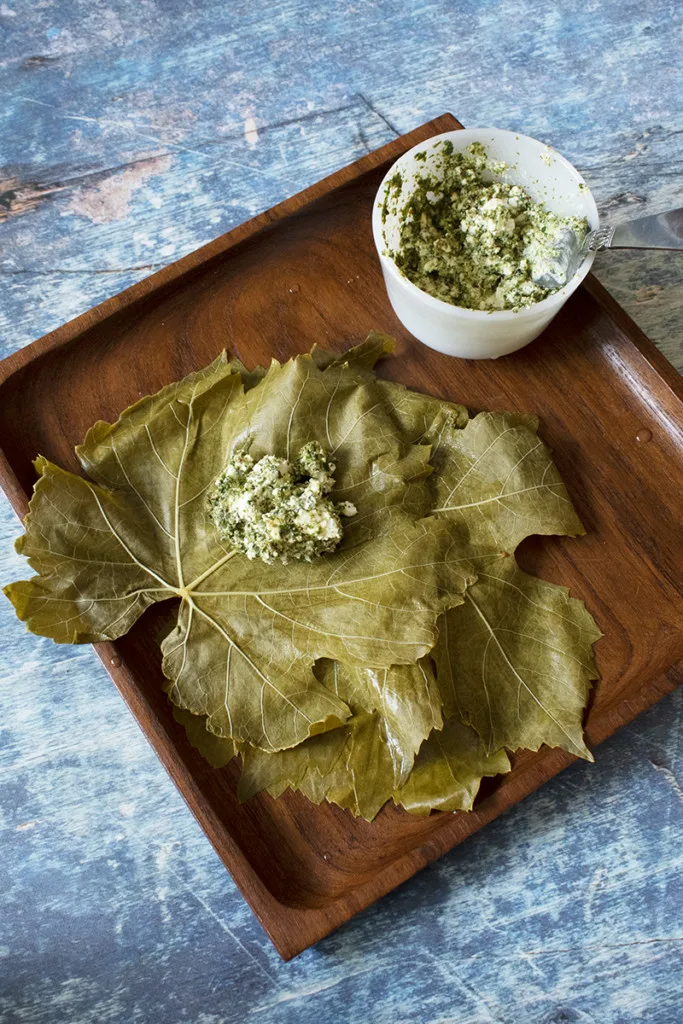
Whether you grow grapes or find wild grapes while foraging, don’t overlook the large leaves.
Grape leaves are a staple in Mediterranean dishes. They are delicious stuffed with rice, couscous, meat, cheese, or other creative fillings.
15. The Apple Core
Look, I’m just going to come right out and say it – we’ve been lied to, there is no core.
This idea of throwing out the core is nonsense.
There are only two parts of an apple that aren’t edible – the seeds and the stem. And if you know how to eat an apple properly, you will quickly realize that you’ve been throwing out ¼ of tasty apple your whole life.
To eat an apple properly, start at the bottom and work your way up the top. Spit out the seeds as you come to them. If you do it right, all you’re left with is a few seeds and a stem.
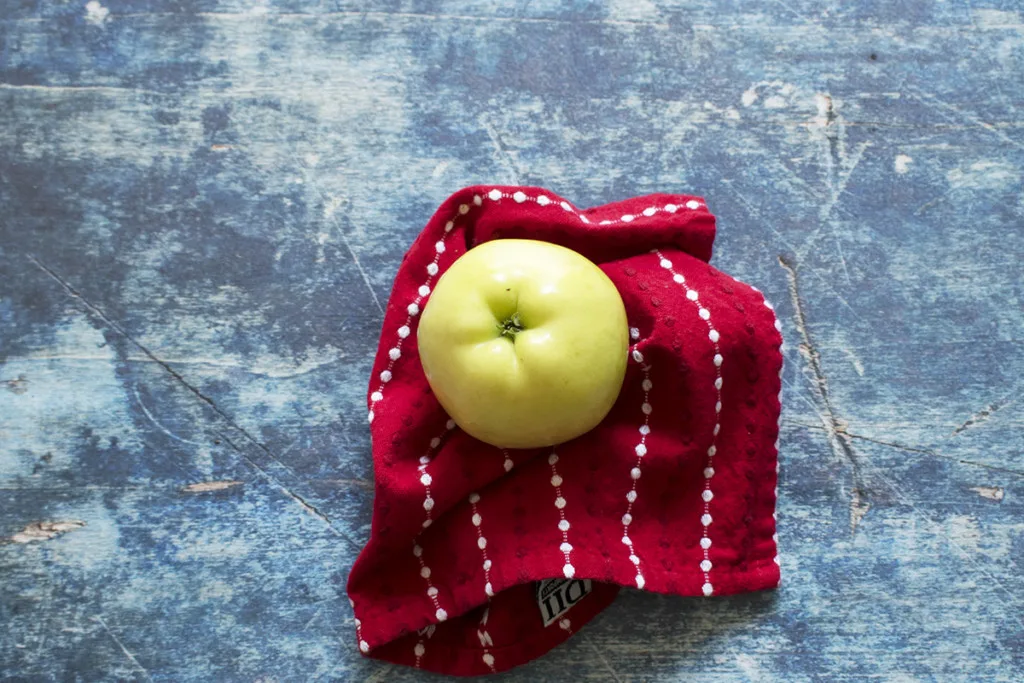
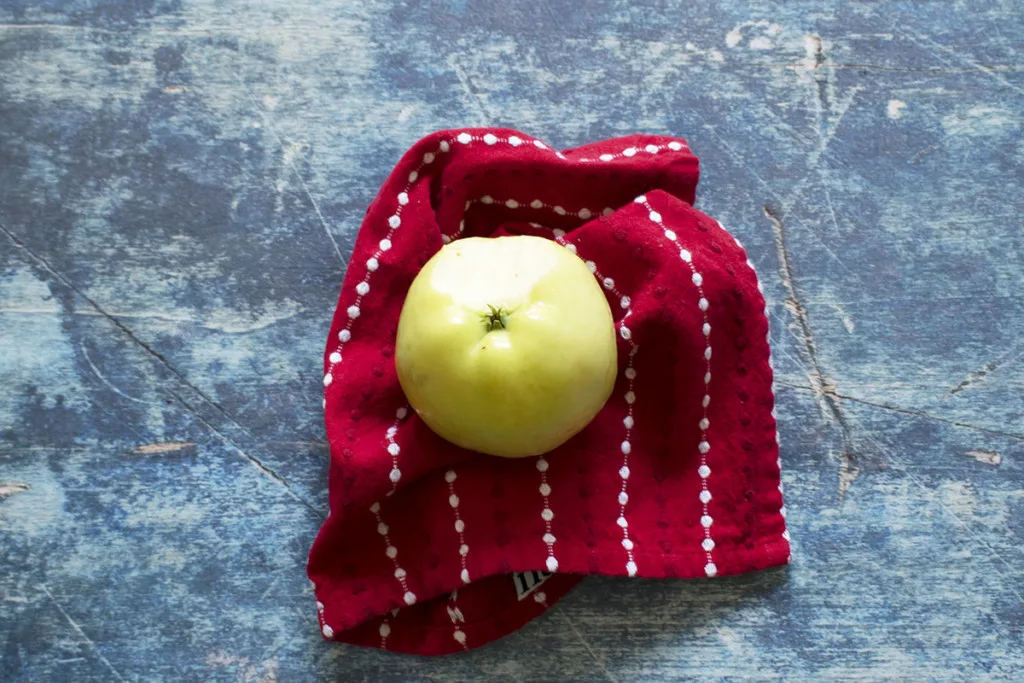
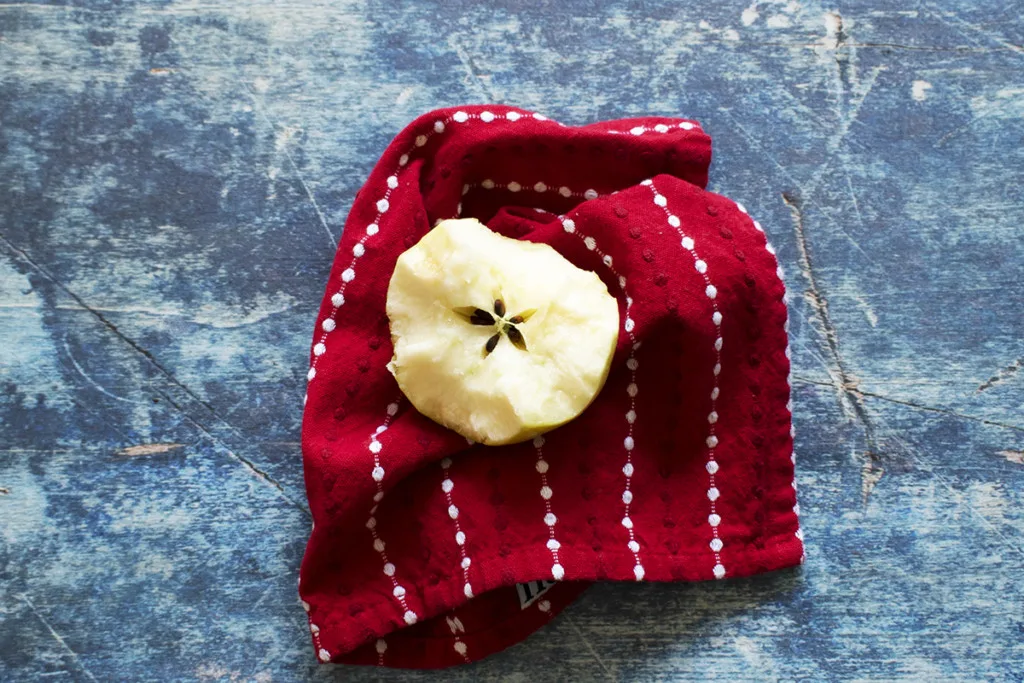
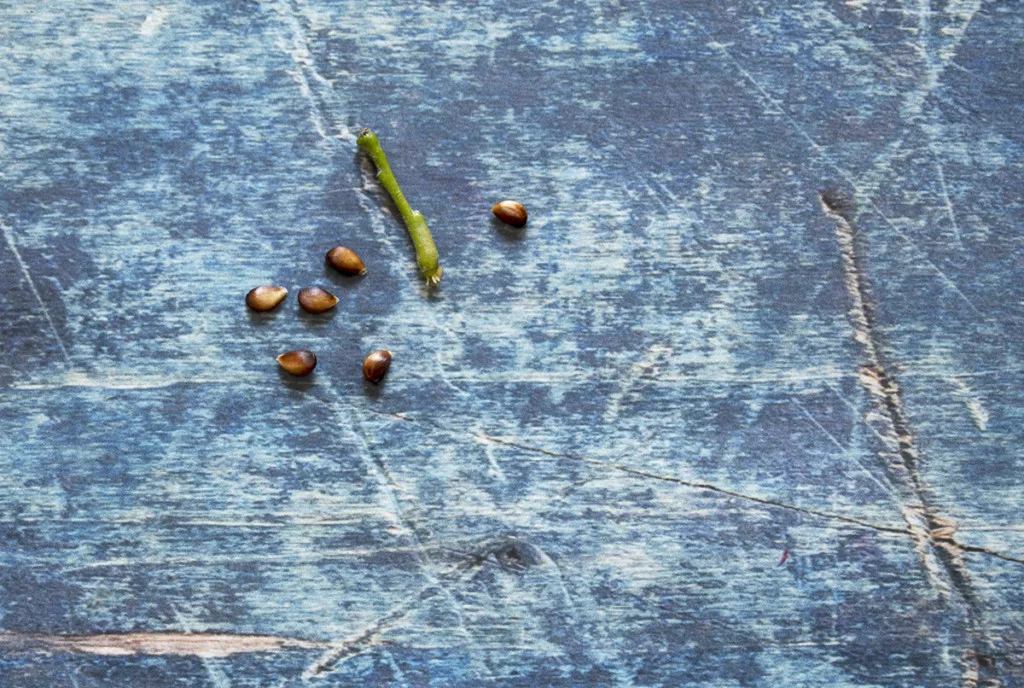
We’ve got an impressive list of vegetables that multitask with other edible parts. Give some of these a try.
You’ll help with the problem of food waste, and you just might find a new favorite veggie. I’m betting it will be the roasted cauliflower leaves.

Get the famous Rural Sprout newsletter delivered to your inbox.
Including Sunday musings from our editor, Tracey, as well as “What’s Up Wednesday” our roundup of what’s in season and new article updates and alerts.


